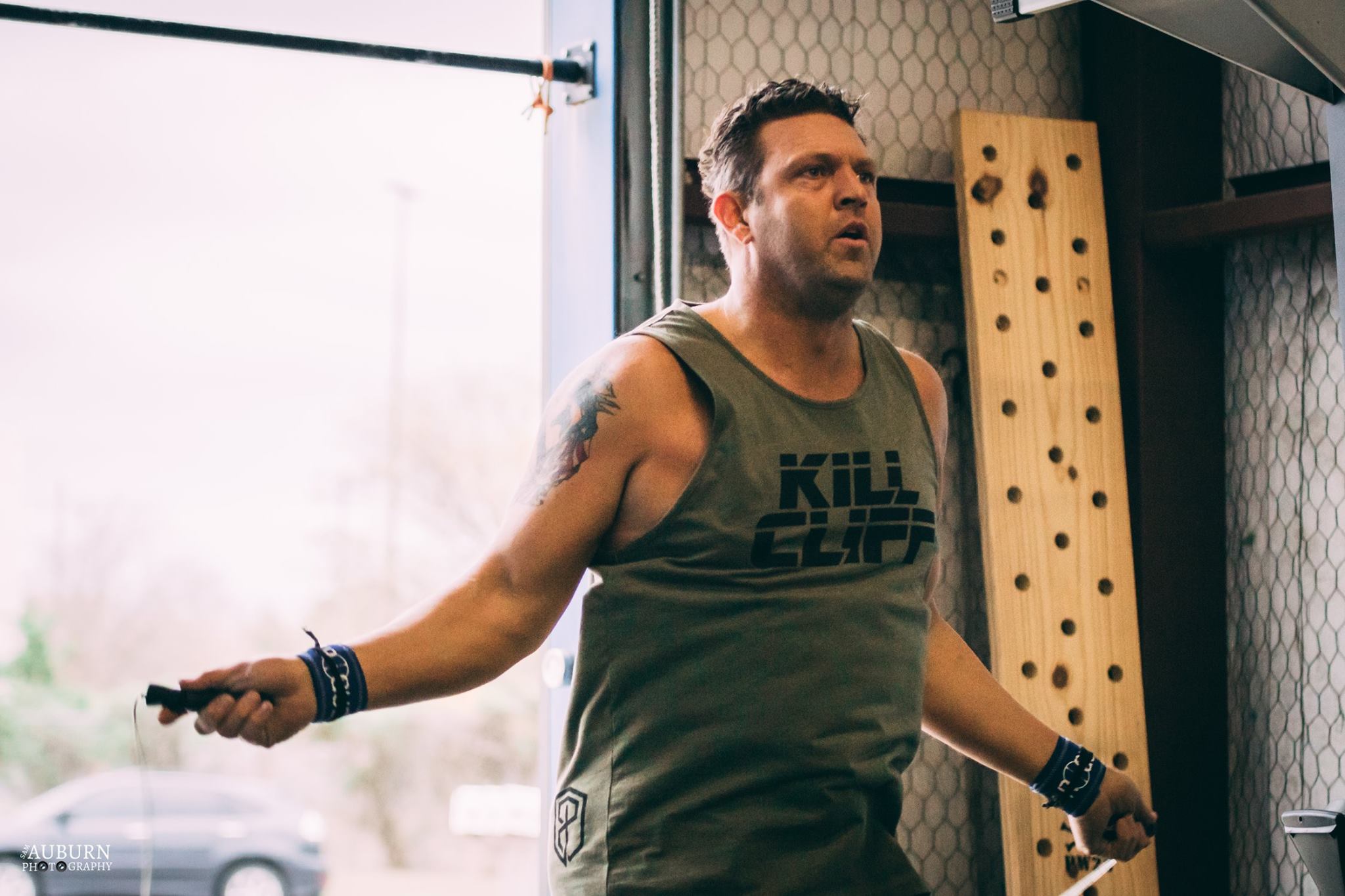
Scott Garrett, better known as Big Sarge, is a retired U.S. Army soldier and Purple Heart recipient. As a member of the 1st Calvary Division, one of the most decorated divisions of the U.S. Army, Garrett was deployed to Iraq for Operation Iraqi Freedom II. On September 5th, 2004, the HUMMV that Garrett was driving was hit by an Improvised Explosive Device (IED) that flipped the HUMMV and ejected him from the vehicle.
Continue reading below as Scott describes the accident, his road to recovery, and how he's giving back now. Garrett's passion for service and helping others are traits that we should all strive to have and make him a wonderful addition to the Kill Cliff Warriors.
KC: What got you into the military?
SG: I was getting ready for college and joined the National Guard in Florida to help me lead into college. I’m a fourth-generation non-commissioned officer. Both my father and grandfather were in the Air Force. My family has served back to the Civil War and beyond that. I had a love of service through my family history. I wanted to blow shit up, shoot, and be involved. There were a few things that led me to active duty; I wasn't doing well in school and I met my wife. I realized that if I wanted to marry her, I needed to get serious about a career. I didn’t want to get married without having a plan for a future career.
KC: You were active military during the attacks on September 11, 2001. Did that event even more so justify your enrollment? What was it like to be active military during that time?
SG: For me, I had been around for the first Gulf War but never went over. I had already been in active zones in Saudi Arabia and Bosnia. For me, 9/11 wasn’t a big surprise, especially when you’ve been in the military for a while.
There were people that joined after [September 11th]. They raised the age limit and I had 35-year-old privates because they felt compelled to join after 9/11. It did not have as big of an impact on me because I had made my career choice and was well into my career and mindset at that point.
KC: What all do you remember about your accident?
SG: We were on a convoy headed into Baghdad. We were going through a little village that’s about the size of a convenience store when we came under attack. As we came through the village, my HUMMVwas second from the front. We hit the first IED dead center on the passenger side front tire. The IED blew up the HUMMV and flipped us. The gunner was killed and the lieutenant on that side lost his arm. I was thrown through the front of the windshield.
While I was laying on the ground, I took a round to my leg. It went through my upper thigh and out the side. The wound didn’t cause me any issues, it was the fact that the bullets were all old and rusted, which caused infections in my leg.
KC: What was your road to recovery like? How long did it take?
SC: I broke my back and my neck. I had nerve damage and a traumatic brain injury. I couldn’t do an MRI for several years after due to the shrapnel.
I had to learn to walk again. Once I left Germany I was sent to Walter Reed Army Medical Center in Bethesda, MD and did most of my rehab there. President George W. Bush and his wife pinned my Purple Heart. I was out-processed and sent home where they retired me.
Learning to walk again was the weirdest thing. I knew how to walk but my body had to relearn that. The nerve damage had to be repaired. That took the better part of a year. When retired in 2006, still had a lot of recovering to do health-wise due to being pumped with a bunch of steroids. I was almost over 300 pounds due to food, depression, and such. Your body is just in total shock. The road to being regularly active took about four years. Doctors wanted to do more things to my body, but I had to decline because I knew I had a lot of living I still wanted to do. I lost 30 more pounds and things started to get better from there.
KC: Were you seeking to get back into the military?
SG: Yes, I was. I did some Arial hog hunting which got me involved with a lot of different people. I was invited to a few different movie sets in Texas that were filming military films and needed a military consultant to make things accurate. I started helping veterans that needed assistance. I was the Charter Commander of Purple Heart Austin for two years before stepping down to help with CrossFit adaptive athletes.
KC: How did you get into CrossFit?
SG: I started in 2014 with the wounded warrior project. [CrossFit] approached me and I had been interested in it. It was functional fitness that was helping me recover. CrossFit wanted me to help with their adaptive athletes that were competing. A lot of people don’t know about these guys but they’re out there with one arm or leg and deadlifting just as much as everyone else. We were helping them with coaching and nutrition. Many of them were veterans.
KC: What does Kill the Quit mean to you?
SG: One of the worst movie quotes is “Do or do not, there is no try” by Yoda in Star Wars. That’s crap. How do you know you can do something if you don’t try? The worst thing you can hear from someone is “I can’t do that”. Got to get them to try it and figure out if they have it in them. Don’t let them quit. Quitting is a mentality that people let rule them and it’s bullshit.
Do you know someone that you think would be a good addition to the Kill Cliff Warriors? Email connor@killcliff.com and let him know!







